Related Research Articles
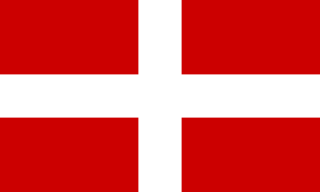
Savoy is a cultural-historical region in the Western Alps.

Victor Amadeus I was the Duke of Savoy from 1630 to 1637. He was also known as the Lion of Susa.

The Battle of Pavia, fought on the morning of 24 February 1525, was the decisive engagement of the Italian War of 1521–1526 between the Kingdom of France and the Habsburg empire of Charles V, Holy Roman Emperor as well as ruler of Spain, Austria, the Low Countries, and the Two Sicilies.

The Duchy of Milan was a state in northern Italy, created in 1395 by Gian Galeazzo Visconti, then the lord of Milan, and a member of the important Visconti family, that had been ruling the city since 1277.

From 1416 to 1847, the Duchy of Savoy was a country in Western Europe. It was created when Sigismund, King of the Romans, raised the County of Savoy into a duchy for Amadeus VIII. The duchy was an Imperial fief, subject of the Holy Roman Empire with a vote in the Imperial Diet. From the 16th century, Savoy belonged to the Upper Rhenish Circle. Throughout its history, it was ruled by the House of Savoy and formed a part of the larger Savoyard state, which in 1720 became the Kingdom of Sardinia.
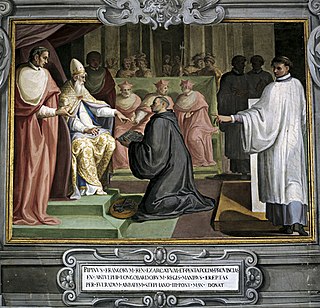
The Donation of Pepin in 756 provided a legal basis for the creation of the Papal States, thus extending the temporal rule of the popes beyond the duchy of Rome.
The Treaty of Worms was a political alliance formed between Great Britain, Austria and the Kingdom of Sardinia, signed on 13 September 1743, during the War of the Austrian Succession.

The Duchy of Spoleto was a Lombard territory founded about 570 in central Italy by the Lombard dux Faroald. Its capital was the city of Spoleto.

The Italian War of 1521–1526, sometimes known as the Four Years' War, was a part of the Italian Wars. The war pitted Francis I of France and the Republic of Venice against the Holy Roman Emperor Charles V, Henry VIII of England, and the Papal States. It arose from animosity over the election of Charles as Emperor in 1519–1520 and from Pope Leo X's need to ally with Charles against Martin Luther.

Bassignana is a municipality in the Province of Alessandria, Piedmont, northern Italy. The village is situated near the confluence of the Po River and the Tanaro river.

The Kingdom of Italy, also called Imperial Italy, was one of the constituent kingdoms of the Holy Roman Empire, along with the kingdoms of Germany, Bohemia, and Burgundy. It comprised most of northern and central Italy. Its original capital was Pavia until the 11th century.
Castello d'Agogna is a small town and comune (municipality) in the Province of Pavia in the Italian region Lombardy, located about 45 km southwest of Milan and about 35 km west of Pavia. It is crossed by the Agogna river.

Valeggio is a comune (municipality) in the Province of Pavia in the Italian region Lombardy, located about 40 km southwest of Milan and about 25 km west of Pavia.
The Treaty of Susa refers to two separate peace treaties signed in 1629 at Susa in the Duchy of Savoy, recently occupied by France during the Thirty Years' War.
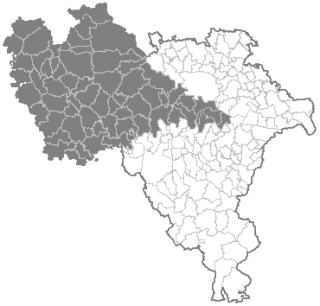
The Lomellina is a geographical and historical area in the Po Valley of northern Italy, located in south-western Lombardy between the Sesia, Po and Ticino rivers. It is one of three areal divisions of the Province of Pavia.
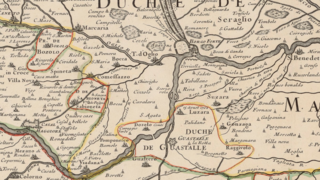
The Duchy of Guastalla was an Italian state which existed between 1621 and 1748. It was bordered by the Duchy of Modena and Reggio and the Po River to the north, on the opposite bank of the Duchy of Mantua.
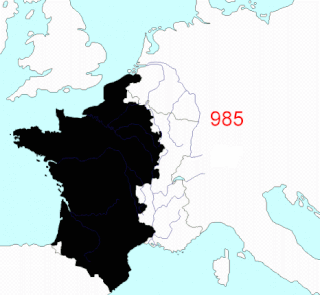
This article describes the process by which the territorial extent of metropolitan France came to be as it is since 1947. The territory of the French State is spread throughout the world. Metropolitan France is that part which is in Europe.
The Battle of Landriano took place on 21 June 1529, between the French army under Francis de Bourbon, Comte de St. Pol and the Imperial–Spanish army commanded by Don Antonio de Leyva, Duke of Terranova in the context of the War of the League of Cognac. The French army was destroyed and the battle's strategic result was that the struggle between Francis I of France and Charles V, Holy Roman Emperor for control of northern Italy was temporarily at an end.

The Treaty of Turin, signed on 29 August 1696 by the French King and the Duchy of Savoy, ended the latter's involvement in the Nine Years' War.
The Milanese War of Succession was a war of succession over the Duchy of Milan from the death of duke Filippo Maria Visconti on 13 August 1447 to the Treaty of Lodi on 9 April 1454.
References
- ↑ Olaf Asbach; Peter Schröder (23 March 2016). The Ashgate Research Companion to the Thirty Years' War. Routledge. pp. 179–. ISBN 978-1-317-04135-1.